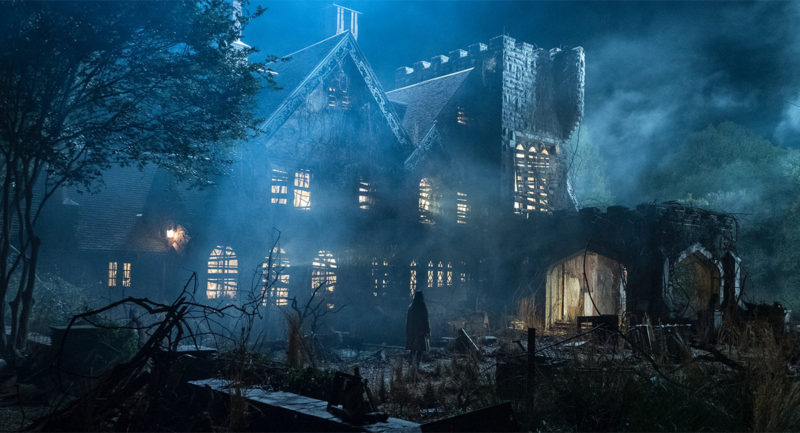“The Haunting of Hill House”
Creator: Mike Flanagan
Cast: Carla Gugino, Michiel Huisman, Timothy Hutton and Elizabeth Reaser
Network: Netflix
4.5/5
If there’s a lesson to be learned from the recent interpretation of Shirley Jackson’s highly influential novel, The Haunting of Hill House, it’s don’t have more than two kids.
Perhaps it was the late night, in my moment of repose post work and flu, I was paying too close attention to how a haunted house can impact a family of seven.
Being a dad myself, working a handful of jobs, you’re curious as to how the environment that’s created for children helps shape them. You hope for the best, but the adult world is unforgiving.
The supernatural world, even more so.
Now, put a family into a house of horrors, set in the late 1980s (insert Paula Abdul music), and you’ll get the usual tropes: depression, substance abuse, failed relationships, an unhealthy fascination with death, fear of commitment and sex addiction.
As we know, the protagonist in the original novel, Eleanor Vance, has a lot of neuroses spawned through her relationship with her mom.
The collective protagonists, family of seven in this modernization is one big ball of melted crayons. So many colours fused together and then cloaked in a blue wash that adds a depressing pallor over the cast, featuring Timothy Hutton and Carla Gugino as the parents, Hugh and Olivia Crain, as well as Michiel Huisman, Elizabeth Reaser, Kate Siegel, Victoria Pedretti and Oliver Jackson-Cohen.
All their emotions boil down to one night that involves their mom. A simple reduction to the series of events that led to their neuroses later in life.
The first two episodes focus of the evolution of the family, from birth (with a litter of kittens) and the death, the grandmother Shirley prepares for an open casket.
This interpretation, as it is far from an adaptation of the 1959 gem, manages to borrow cinematic elements from “Six Feet Under”, “American Horror Story” and old Hammer films and sprinkle them with the prevailing herbs from Jackson’s novels and short stories.
Those themes are neurological disorders – migraines, headaches, night terrors – family, and death in its inevitable, inescapable way.
Though the individual Crain kids have varying issues, it’s the older two, who were able to overcome the bizarre denouement of their stay at Hill House, seem to be the most stable. The middle child, Theodora, is on the bubble, and the youngest two, Luke and Nell are the most unstable.
The elder three have done their best to help others, which leads to them neglecting the latter two. The dismissal of Nell’s mental health, which ultimately leads to her end, and the family’s return to Hill House, as well as ending their enabling of Luke’s substance abuse, are anchors to why the evil inside the house has returned.
Shirley is a funeral director. Steven is the writer who helps people heal after a tragedy. And Theodora is a child psychologist, who puts bad people away for diddling kids.
Even though they’re rooted in science and logic and in a sense, altruism, there are also elements of the latent phenomenon within them. Theo shows signs of psychometry – and covers up her gift (or curse) with gloves to avoid being sensitive. She’s able to quickly pick up on certain aspects in her environment or of people by touch.
Shirley shows high levels of empathy. Steven suppresses his experiences and the younger two, well they just feel too much, and because of that, they can’t handle those experiences.
For the non-believer and believer alike, this serial presents different aspects of a haunting. The slow unraveling of mental health. The grappling with the intangible, or as Steven puts early in the series, preternatural.
I also appreciate the barbs at both believers and skeptics. Theo, the middle in both age and belief, takes a shot at Shirley and Steven for doing their best James Randi impersonations. Then there are the knocks at the pious, superstitious, Mrs. Dudley, played by resident horror actor, Annabeth Gish.
Above all, “The Haunting of Hill House” has provided the foundation as a great supernatural horror tale. It paints a picture of a family unraveled by tragedy and its attempts to pick up the pieces after a recurring tragedy.
It’s latched its tendrils onto me, and I want to see the individual cathartic releases of each of the characters.

